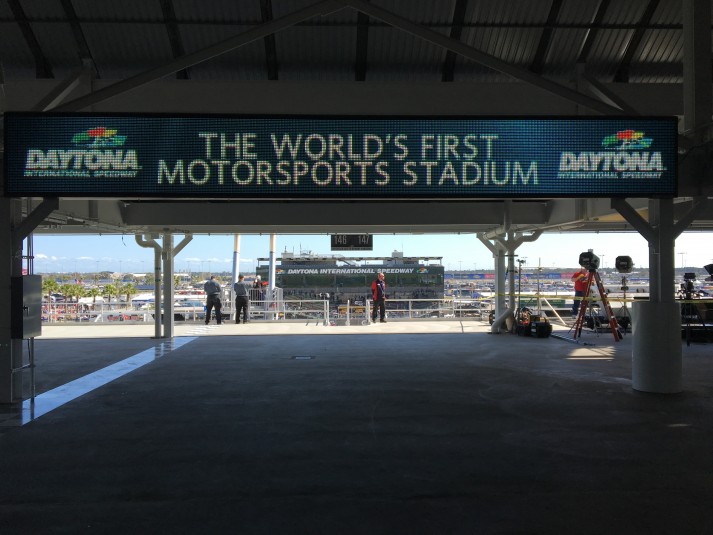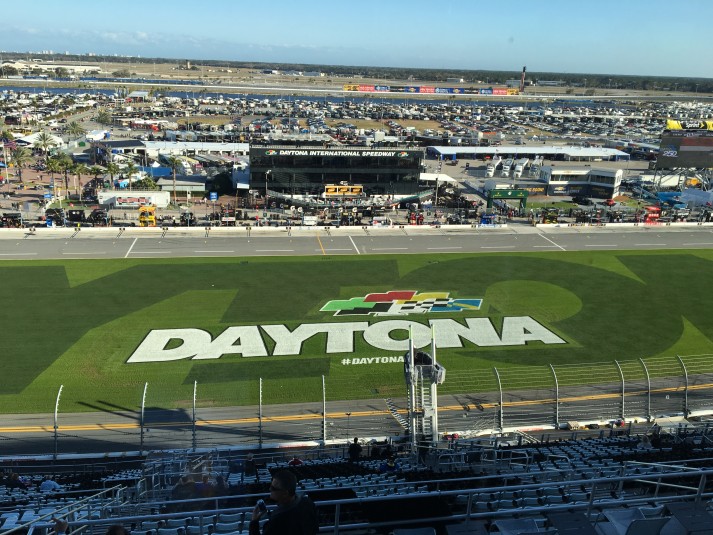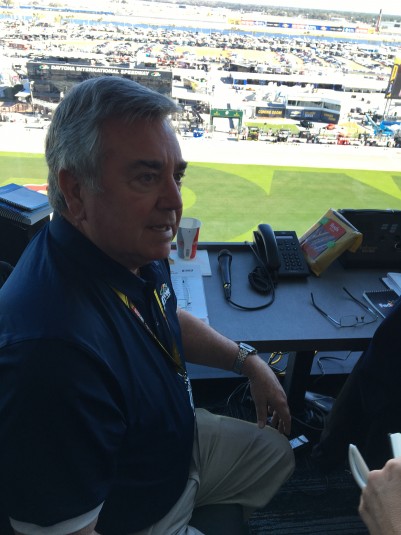Daytona 500’s New Home Has Robust New Sound System
The massive overhaul started from scratch with audio to meet in-venue and broadcast needs
Story Highlights
The Daytona 500 will have breathtaking sound, whether it’s experienced at the track or at home. The only difference will be that one will be the result of a massive overhaul that saw an entire new live sound system installed at Daytona International Speedway, starting with a new digital FOH console and terminating in thousands of loudspeakers whose signals travel more than 100 miles of Cat 6 and single-mode fiber cabling. The broadcast audio, on the other hand, is the outcome of more than a decade’s worth of constant tweaking by Fox Sports, building the race in layers with a foundation made of some of the most challenging sound heard on broadcast sports.
 The sound inside Daytona Rising, the $400 million reimagining of NASCAR’s flagship venue, is new from scratch. The 2,791 audio speakers, mostly JBL’s Control series loudspeakers, saturate the new fan area with sheer numbers. To achieve clarity in a very high-noise environment, they are all pointed downward. Aiming them at the concrete floors, however, also creates the potential for speech-intelligibility issues from hard-surface reflection. Thus, the power to each individual speaker is attenuated, with sufficient coverage coming from the densely distributed layout.
The sound inside Daytona Rising, the $400 million reimagining of NASCAR’s flagship venue, is new from scratch. The 2,791 audio speakers, mostly JBL’s Control series loudspeakers, saturate the new fan area with sheer numbers. To achieve clarity in a very high-noise environment, they are all pointed downward. Aiming them at the concrete floors, however, also creates the potential for speech-intelligibility issues from hard-surface reflection. Thus, the power to each individual speaker is attenuated, with sufficient coverage coming from the densely distributed layout.
Facing the track from atop the nearly mile-long grandstand, 295 Community Sound R.5 and R.2 series speakers were assembled and attached to the poles on the ground, along with light fixtures, with the finished assemblies lifted by crane to positions 190 ft. off the ground.
All grandstand and concourse speakers are connected via copper cabling and managed with a combination of 14 BSS Soundweb London BLU-806, three BLU-326, 10 BLU-BOBs, and four BLU0-BOB digital-signal processors, all of which are DANTE-enabled. Networked audio is extensive: audio sources are on a DANTE network from the sources to the IDF closets and on BSS BLU-Link networks from those to the amplifiers. The new FOH Yamaha CL5 digital console is also DANTE-enabled.
“The challenge for all of this was getting the network right,” says Tom Bruinsma, who has mixed Daytona’s FOH for five years. “Having DANTE gives me direct control over every element on the network, so, when something goes down, I can manage it from the console and not have to send someone running down to the track.”
The interface between the DANTE network and the LU-Link network was critical, according to Mike Dirks, senior field engineer at Integration Factory, the A/V integrator that did most of Daytona Rising’s A/V infrastructure. “The programming of the BSS Soundweb BLU-Link is what makes them work together properly,” he says, speaking from the FOH perch in the new Race Operations tier that also includes the Motor Racing Network’s radio position and the track-announcer booth.
From there, Jim Mueller’s familiar voice will call out each car and driver before the start of the race, and then he will step back and let colleagues Buddy Long and Joe Coss call the race itself for the track, alternating with announcers from the Motor Racing Network, who also feed the VIP suites’ distributed audio systems.
“We’re getting over 100 I/O, and we’re also feeding it to broadcast: Fox Sports, Sprint Vision, and Motor Racing Network,” Bruinsma explains. “The goal is to make sure the audio moves through the house with consistency. It’s a hell of a robust network.”
On the Air
Viewers will hear the same great audio they’ve come to expect, says Fox Sports A1 Kevin McCloskey, citing the effects sound from more than 150 microphones placed along the track and throughout the venue. A special audio-editing unit will also be deployed solely for driver-to-crew chief communication to play back live interaction.
“We’ve been doing this for a long time, and it’s evolved at every race,” says McCloskey, who submixed the race’s sound effects until two years ago, when he took over the A1 slot. Chip Weaver will execute the submix this year.
But the venue’s radical renovation will have some impact on the broadcast, according to Fred Aldous, the Fox Sports senior mixer and consultant on NASCAR shows for 14 years before semi-retiring last year. “There’s a new announce booth and more fiber connectivity to the broadcast compound, and that’s certainly good,” he says. The new announce booth remains in the expanded grandstand, where its acoustical isolation is expected to be good — a key thing when SPL can reach up to 143 dB. Inside that new booth, however, an adjusted talent alignment — former NASCAR champ Jeff Gordon is joining its ranks, and Larry McReynolds is taking the position of technical analyst — may mean more microphone activity for the main mix.
“The director can throw Larry in there at any time,” says Aldous, “so Kevin will have to be on his toes.”
In addition, the current location of the broadcast compound, outside of Turn 3, has also exposed it to higher SPL. After it was moved there three years ago, the race-ending fireworks were suddenly audible inside the audio compartment.
Says Aldous, “All you can do is do the best you can.”


